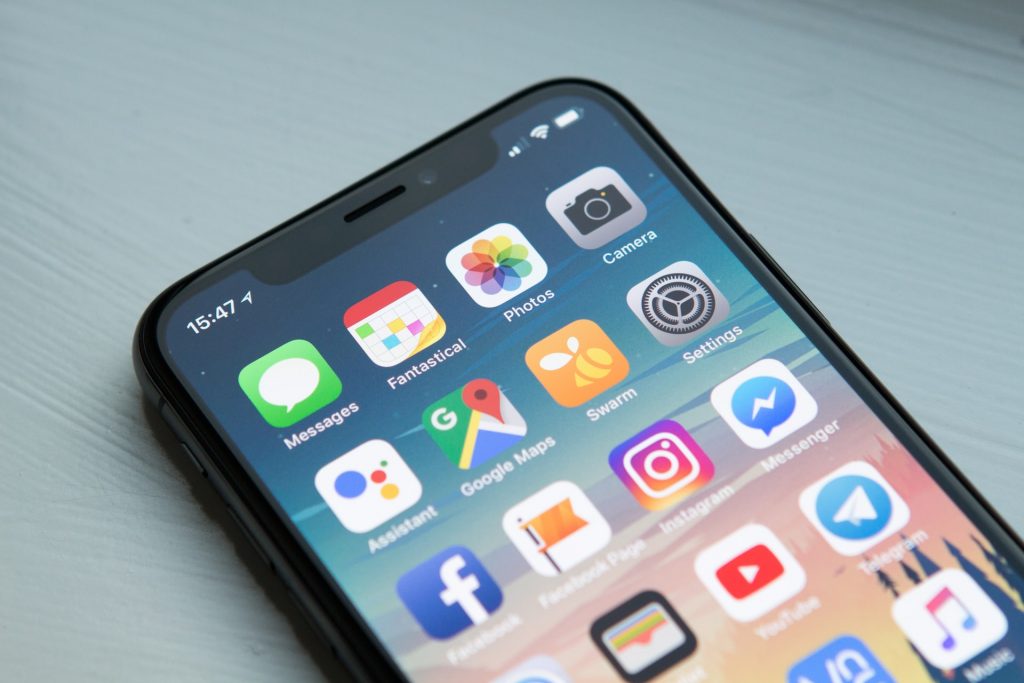
iOS 14.5 arrives very soon. And the usual excitement about potential new features or improvements have taken a rather different turn for this update. Instead we’ve had something a bit more exciting.
Apple and Facebook have been throwing jabs at each other for more than a decade. So it’s fair to say that things have escalated…slowly. Simmering tensions and veiled digs have been replaced by full page ads in newspapers and senior former Apple employees stating that Facebook is “destroying the fabric of democracy”.
Watching two tech monoliths throw shade at each other like WWE wrestlers is quite enjoyable. But if you own or run an iPhone app, this battle could affect you. And it’s all to do with ads.
Let’s take a look.

How app tracking works and how it’s changing
iOS 14 brought lots of new privacy features and gives users much more control on how apps handle their data. Most people would agree that this is only a good thing.
But iOS 14.5 will essentially kill something that many advertisers, marketers and publishers relied upon. It’s called IDFA.
What is IDFA?
Advertisers can use a device number, called IDFA (Identifier for Advertisers) to target personalized ads and measure their effectiveness. IDFA is a randomized device number that is shared across every app installed on the user’s device. There is an equivalent for Android phones called GAID (Google Advertising ID) that, largely, works in the same way.
When users use different apps on their device, app publishers can quite easily identify users based on user app activities. And with proper attribution and fingerprinting, the same users can be identified on the mobile web. This is why users might see shopping ads in a news app. They’ve visited the shopping app before, been identified with their IDFA (or GAID) number so now ads can be served to them across multiple apps.
Advertisers and publishers that use IDFA rely on it for sending out targeted, personalized advertising and gauging the success of those campaigns.
Apple announced changes to how IDFA is handled before iOS14 was released which is when the big fight between them and Facebook, the publisher who relies on IDFA far more than anyone else, began. In a reasonable move, Apple announced it would delay the biggest changes until 2021.
It’s now February 2021. And the rumor mill suggests iOS 14.5 is ready to go. There is also pressure on Google to adopt the same practices, especially after their move to drop third-party cookie support from Chrome.

What is App Tracking Transparency?
In the current version of iOS 14, App Tracking is turned on by default. Users can turn it off in the privacy section in the settings. But most users won’t do that.
What’s got Facebook so agitated is that iOS 14.5 turns the feature off by default. Which means that each app on a user’s device that wants to use app tracking has to ask for permission when it’s opened after the iOS 14.5 update has been released. Most users will refuse to give apps permission to track them when they are asked. Which could obviously affect Facebook’s profits. Facebook has said that the effectiveness of targeted ads will drop in this scenario.
Facebook has also suggested that the main beneficiary of this change is Apple. According to Facebook developers who offer their apps for free but use ads to fund them will be forced to start charging for their app or use in-app purchases. As Apple takes 30% fee for apps purchased through the App Store, Facebook argues that this change is motivated purely by increasing profits.

How will this affect my app and business?
If your business uses targeted advertising on Facebook, things will definitely change. If you want to reach iOS users, there are some steps you’ll have to take to prepare yourself. Facebook has an in-depth blog post detailing what you need to be aware of. If you work with an agency, they may already have plans in place to deal with this.
The most important thing to remember is to closely monitor your current campaign spend. iOS 14.5 has not been released yet. But you will not receive much notice before it comes out. So it’s important to audit your marketing campaigns now and make sure you are prepared. Otherwise you may end up wasting your budget with ineffective advertising.
If you use a third-party attribution service, like AppsFlyer, you may also experience some data loss. Services like AppsFlyer tend to use IDFA for attribution purposes to let you know what users are doing in your app. This can be useful if you are paying for digital advertising to drive downloads and sign ups for your app. This kind of attribution helps you to see if the campaigns are effective so you can tailor your marketing messaging accordingly.
Without IDFA granular tracking within your app from your digital campaigns may not be possible. But AppsFlyer (and others) only uses IDFA when it’s available. Your campaigns won’t “break”, but you might see less data than you are used to. Which could later impact marketing ROI.

How MAQE can help
MAQE has a team of data and commerce personalization specialists waiting to help you navigate changes like this. Get in touch with us via [email protected] for advice on how to ensure user privacy and help you to create personal experiences while growing ROI.
